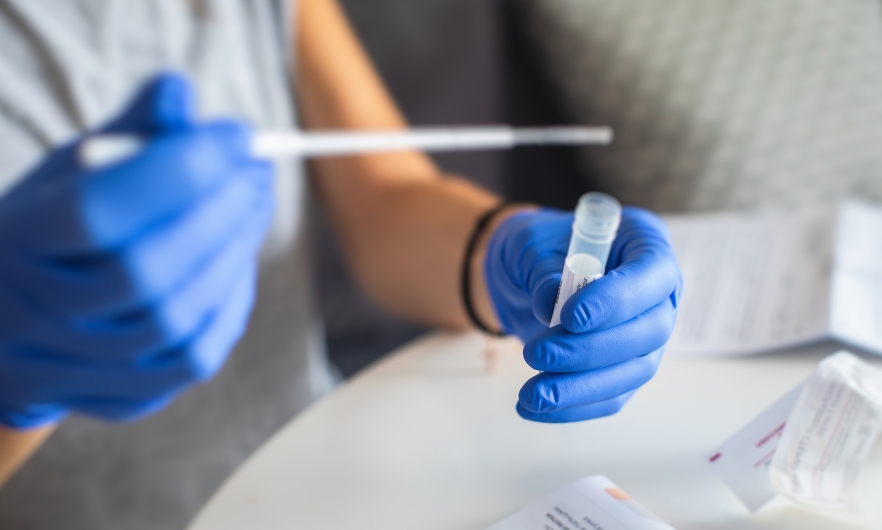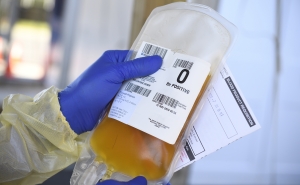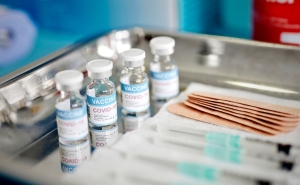An Update on COVID-19 Testing: How Vaccine Mandates, At-Home Kits, and New Policies May Impact the Ways We Use COVID Tests

Nearly two years into the global COVID-19 pandemic, testing remains a pain point for the U.S. New vaccine mandates require many to get tested regularly, which is leading to an influx of data and changing the scope of surveillance.
Technological advancements have put kits in the hands of consumers at home, but their role in infection prevention is unclear. These test results are not tracked by local health departments, potentially undercounting positive cases.
Heading into the fall and winter, and with more policy changes in the works, what’s the current landscape of testing and its role in helping to manage the COVID-19 pandemic? Analyst and researcher Amanda Kobokovich, MPH, of the Center for Health Security answers these questions and more.
Will Biden’s vaccine mandate mean a surge in testing?
For private sector employers and federal employees with certain exemptions, President Biden’s vaccine mandates will likely fuel a modest but sustained increase in testing.
Many employers already have weekly testing protocols in place for their employees, and school districts are also asking students to report negative tests to remain in the classroom. The codification of these expectations for a larger swath of employers will likely result in testing numbers staying consistent over a longer period of time, as opposed to the waxing and waning patterns that we have seen in testing to date as state and local policies come and go.
Will a testing surge have an effect on COVID data, like positivity rates?
In areas where testing levels are not high enough to give an accurate picture of COVID-19 incidence, an increase in testing will likely result in decreased percent positivity rates as the denominator of negative tests expands.
An estimated benchmark to scan for COVID-19 disease in the population is around 150,000 tests per 100,000 population weekly. Currently, 33 states and Washington, DC, are [each] performing and reporting over 150,000 tests per week. States with the highest percent positivity rates at this time in the pandemic also are far below this benchmark; Iowa is reporting a 43% test positivity rate with only around 53,000 tests per 100,000 population.
Learn more about “Understanding the Percent Positive.”
What about at-home tests? As more people use them, does that affect my region’s test positivity rate? If so, how?
The number of at-home tests being performed is more difficult to track than tests performed in laboratories or at doctors’ offices because most of these at-home test results can be read directly by the user without outside assistance.
There are likely many more people testing negative for COVID-19 each day than public health departments are aware of. For people testing positive with at-home kits, it is recommended to seek confirmatory testing, thus capturing more reportable results in public health systems, but it is doubtful that this occurs very often.
The addition of at-home testing numbers would be beneficial to a greater understanding of COVID-19 circulating in the community, but laboratory-verified testing numbers at the recommended benchmark rate are largely sufficient to estimate an accurate percent positivity rate.
If I’m fully vaccinated, how reliable is any COVID test?
COVID-19 tests with up-to-date FDA EUA are still reliable at detecting COVID-19, whether symptomatic or asymptomatic. The FDA keeps a running list of tests that have shown decreased ability to detect SARS-CoV-2 variants, such as the delta variant.
Otherwise, COVID-19 tests are still an important tool for disease transmission among vaccinated and unvaccinated persons. Only around 0.5% to 1.0% of fully vaccinated persons appear to test positive for COVID-19, a situation known as a “breakthrough case.” Since breakthrough cases exist on a spectrum of symptoms, ranging from fully asymptomatic to more worrisome disease, regular testing remains a key component of the pandemic response strategy to identify these cases. If someone has a known exposure to someone with COVID-19, the CDC recommends that they should be tested regardless of vaccination status.
Aside from reliability at detecting breakthrough cases, there are still mandatory applications of testing for all persons regardless of vaccination status. In the international travel sector, many countries, including the United States, require a laboratory-verified negative test within the last 72 hours upon entry.
I’m thinking of ordering some at-home tests. Under what circumstances are they the most helpful?
As the cost of at-home testing hopefully decreases in the coming months, these tests can be incredibly useful for routine checks before heading into the office, going to school, or visiting family and friends.
Some school districts have already implemented a “test-to-stay” policy in which students who have been identified as a close contact of a positive case may continue to attend in-person learning as long as they test negative. Many of these “test-to-stay" policies currently rely on laboratory-verified PCR or rapid antigen tests, but parents of children in districts not using this strategy could use at-home testing to regularly check their family throughout the school year. At-home tests could be quite useful in this environment as long as testing cost is reasonable for families and the tests are readily accessible in local stores or online.
When should I NOT rely on an at-home test? When is it best for me to be tested at a clinic or a place that can process the test in a lab?
If you are planning on traveling internationally, you may need to present a laboratory-verified test as part of entry screening requirements, depending on your destination.
Large venues and sporting events are increasingly requiring verified testing results for entry, which rules out most at-home test results, unless they are reported and independently verified using associated apps or telehealth providers.
There might also be situations in which you would feel more confident in receiving laboratory-verified results before visiting immunocompromised or high-risk family members. At-home tests with FDA EUA have a high level of accuracy and track well against results from laboratory-based tests, but if you have difficulty swabbing yourself or would feel more confident in a professional performing the test, you can always find testing resources in your area.
If I test positive for COVID on an at-home test, what should I do? Is there anyone I need to call?
If you test positive using an at-home test, you should follow-up with your health care provider and follow the instructions on your test kit to report your results to the local health department. You should isolate in your home according to CDC guidelines and reduce contact with anyone living in your household.
After you’ve reported your results or spoken to your health care provider, you may be contacted by your local health department to alert any close contacts with whom you may have recently interacted. Always stay in touch with your health care provider, monitor your symptoms, and seek medical attention if necessary.
Why are at-home tests so expensive in the U.S. compared to in other countries? Is there anything being done to change that?
President Biden’s recent COVID-19 Action Plan stated that large retailers of at-home COVID-19 tests will be selling these tests at cost for at least the next three months. This action will allow consumers to purchase tests at 35% of the usual cost.
The administration is also directing Medicaid to cover the cost of at-home testing for beneficiaries and utilizing the Defense Production Act to ramp up the production of at-home tests, which will hopefully impact cost down the line as supply increases.
Amanda Kobokovich, MPH, is a managing senior analyst and research associate at the Johns Hopkins Center for Health Security.





